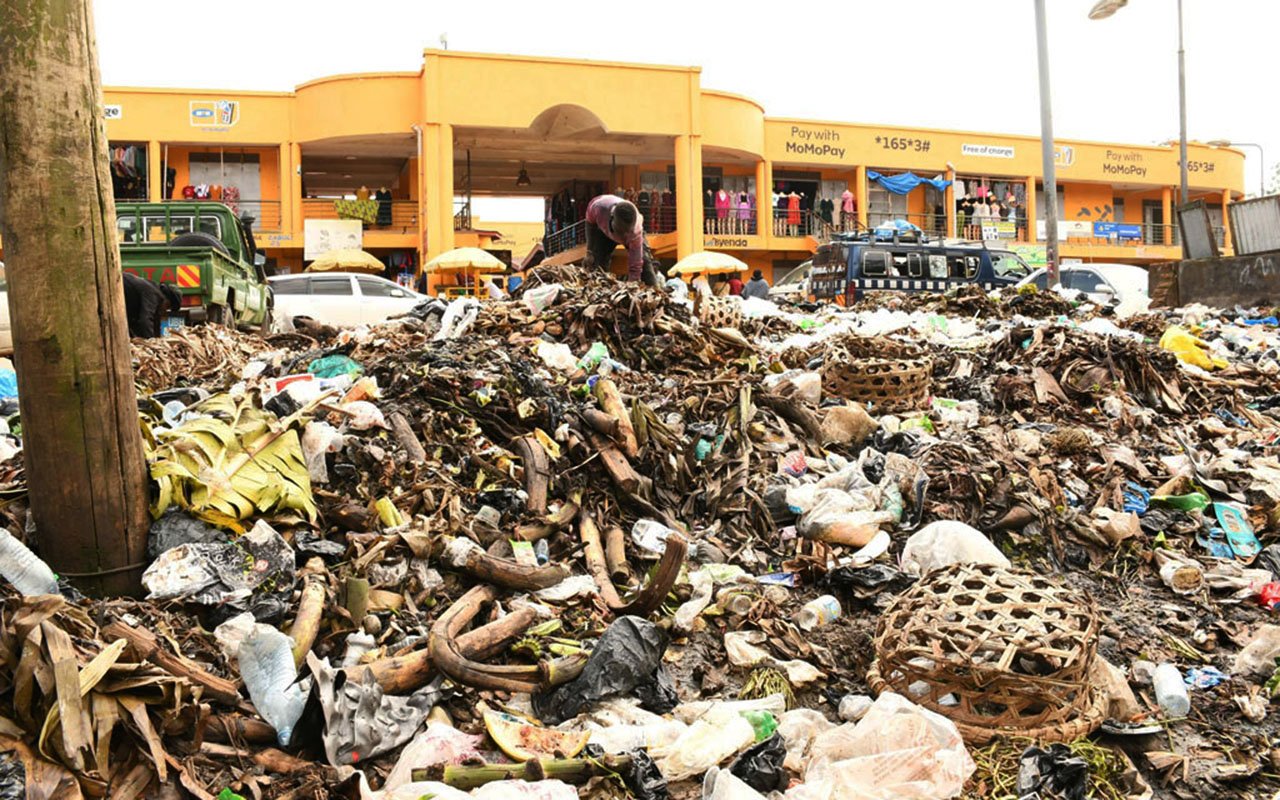Lack of incinerators in Uganda's health centres a ticking time bomb

An incinerator at Rwimi Health Centre III in Bunyangabu District, which was built with donor funding. PHOTO/ALEX
ASHABA
What you need to know:
- The survey shows that on average, in a district with 10 government facilities, about two have incinerators.
- A joint health facility assessment conducted by the Ministry of Health and the AIDSTAR-One project showed that on average, each hospital generates 92kgs of waste per day, 40 percent of which is hazardous.
Most upcountry health centres face a mounting medical waste management crisis due to a lack of incinerators.
A Monitor survey shows that facilities have turned to open burning as a desperate measure to dispose of hazardous medical waste.
The survey shows that on average, in a district with 10 government facilities, about two have incinerators. The rest either transport the waste to those in the neighbourhood or do open burning.
However, the lack of proper waste disposal methods poses severe risks to both public health and the environment.
For instance, the entire Kabarole District has only two incinerators, located at Kijura Health Centre III and Ruteete Health Centre IV.
As a result, Dr Steven Kalyegira, the district health officer, said medical waste from other health facilities is transported to the two sites for disposal or open burning.
The two incinerators were constructed with support from the International Water and Sanitation Centre (IRC).
Mr Martin Watsis, the regional WASH adviser for IRC, explained that the incinerator at Ruteete Health Center IV was built in 2021 at Shs110 million.
The facility includes a waste shed, ash pit, tools store, and a chain-link fence.
He noted that the incinerator at Kijura Health Centre III awaits final installation before it can be handed over.
"Before these incinerators were built, facilities were directly burning waste, which is dangerous to the environment, we also constructed another incinerator in Bunyangabu District in 2022, which began operations in March 2023 at Rwimi Health Centre III, and soon we will begin construction on another at Kisomoro Health Centre III. We are grateful to our donors for providing the necessary funds," he said.
The Bunyangabu District Health Officer, Dr Richard Obeti, said the whole district with 20 facilities depends on two incinerators, which are located at Kibiito Health Centre IV and Rwimi Health Centre III.
“Facilities near these centres bring their waste for burning, but those farther away resort to open burning. We thank the IRC for constructing the incinerator at Rwimi and for planning another one at Kisomoro Health Centre III,” he said.
In Ibanda, Dr Julius Bamwine, the district health officer, said they have only two incinerators while other facilities do open burning. He said across health facilities in the district, medical waste is segregated, with dangerous waste placed in red bins and non-dangerous waste in yellow bins.
“Ideally, medical waste should be disposed of through incineration. However, many facilities lack incinerators, with only Ruhoko and Ishongororo health centres along with some private facilities, having them. Health centre II and IIIs often resort to open burning in pits,” he said.
Dr Peter Rwambuka, the in-charge of Ruhoko Health Centre IV in Ibanda District, explained that waste at the facility is segregated based on the level of infectiousness.
The said categories include highly infectious, non-infectious, and less infectious waste.
He said for sharp objects such as needles, there are designated containers, and the facility uses colour-coded bins to ensure proper sorting of waste.
“Medical waste such as human body parts and blood is incinerated on-site, while sharp waste and fumes are collected by the Ministry of Health for disposal at specific centres, while we segregate and incinerate infectious waste, regular waste from the facility is gathered and dumped in a designated area outside the compound,” Dr Rwambuka explained.
In Iganga, Mr Musa Ssengoba, the speaker of the municipal council, explained that they employ both incineration and separation methods to manage medical waste at health centres. The council oversees two health centre IIIs, one of which has an incinerator.
"Iganga Municipal Health Centre III has an incinerator, while the newly-created Buligo Health Centre III is yet to get one, but waste is being managed well, we have so far constructed an incinerator at the municipal health centre, where everything is burnt on-site," he said.
He further explained that at Buligo, a contracted waste management company sorts hazardous items like syringes from other waste before disposing of them at the official site.
A joint health facility assessment conducted by the Ministry of Health and the AIDSTAR-One project showed that on average, each hospital generates 92kgs of waste per day, 40 percent of which is hazardous.
The assessment was conducted across 99 health facilities, including 12 hospitals, 17 health centre IVs, 43 health centre IIIs, and 24 health centre IIs in 18 districts.
It emerged that a level IV health centre generates 42kgs of waste daily, while level III and II health centres generate 25kgs and 20kgs per day, respectively. Overall, a significant proportion of waste generated in the health sector was considered hazardous.
In Jinja City, the Principal Natural Resources Officer, Mr Ernest Nabihamba, stated that Jinja Regional Referral Hospital has an incinerator for disposing of medical waste.
"According to health regulations, all hospitals, including health centres, must have incinerators. Jinja Regional Referral Hospital has one, but there are none in the health centres within Jinja City," Mr Nabihamba said.
He added that the city should have an incinerator for handling medical waste from other health centres but lacks the funds to establish one.
However, authorities at Jinja Regional Referral Hospital explained that the Ministry of Health has contracted a service provider to manage all medical waste, including hazardous waste.
The Principal Hospital Administrator, Mr David Ssemakula, explained that the hospital generates two types of waste: domestic waste from staff quarters and medical waste.
"Medical waste is managed by Green Label, a service provider that collects syringes and other hazardous waste from the wards. Jinja City Council handles domestic waste from staff residences," Mr Ssemakula said.
He added: "We have an incinerator that is yet to be commissioned, which is being constructed by Green Label and the United States Agency for International Development (USAID). Once it is handed over, we plan to start using it immediately."
The Health Educator for Kabale District, Mr Alfred Besigensi, said medical waste disposal primarily relies on open burning, despite contracting a service provider for collection and disposal from health centres.
"Of the 12 health centre IIIs in Kabale District, only one has an incinerator, leaving others to resort to open burning or depend on external service providers," Mr Besigensi explained.
In Kanungu District, Mr Frank Byaruhanga, the council speaker and former secretary for social services, noted that of the nine health centre IIIs, only one has an incinerator. Mr Byaruhanga appealed to the government for funding to construct incinerators at all health centre IIIs and IVs.
In Masindi, Mr Patrick Baguma from Masindi General Hospital reported that the facility has enhanced its waste management capabilities with the construction of a second incinerator, which will soon be fully operational.
"The hospital now has two incinerators. This recent addition is designed to handle waste more efficiently and in an environmentally friendly manner," Mr Baguma observed.
He said the second incinerator will complement the existing one due to the large volume of waste generated by the facility.
In Arua, the regional referral hospital has a functional incinerator and placenta pits for waste management.
However, in Adjumani District, Dzaipi Health Centre III has a non-functional incinerator, and the facility has resorted to using placenta pits for disposing of medical waste.
The in-charge of the health centre, Mr Benedict Zema, explained that the incinerator broke down five years ago and that constructing a new one would require at least Shs50 million.
"We are advocating for the construction of a new incinerator because it is more effective than placenta pits, but it is very expensive," Mr Zema said.
Meanwhile, the Soroti District Health Officer, Dr Charles Okhadi, stated that all health centres in the district have incinerators to safely dispose of and burn medical waste, minimising health hazards to the community.
He added that any improper disposal of medical waste could be attributed to private clinics, which are being monitored by health inspectors.
Compiled by Alex Ashaba, Ismail Bategeka, Philip Wafula, Moureen Biira, Abubaker Kirunda, Tausi Nakato & Denis Edema, Robert Muhereza & Naume Biira, Felix Warom Okello and Marko Taibot, Simon Peter Emwamu, Joviita Kyarisiima & Felix Ainebyoona




